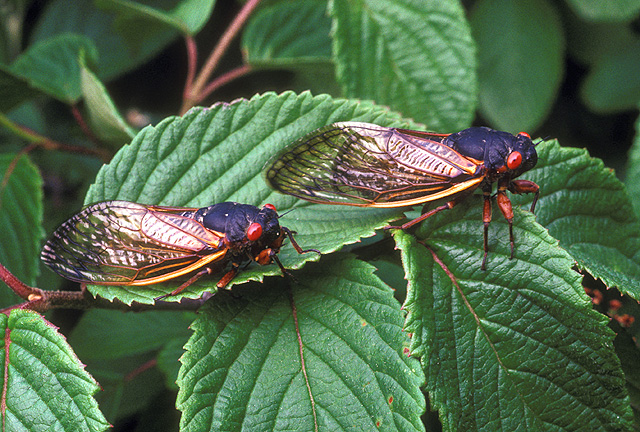"It is amazing to see millions and millions and millions of cicadas all in one place," said Chris Simon, a professor in the department of Ecology and Evolutionary Biology at the University of Connecticut and a leading cicada researcher....From East Haven east to Madison and Killingworth and north to at least Farmington, the cicadas will emerge in late May or the first week of June, climb to the tops of trees and then, a few days later, the males, seeking a mate, sing. After mating, the females cut tiny slits in small tree branches and lay their eggs. The adults live for only two to three weeks. In late summer the eggs hatch and the nymphs burrow into the ground to begin a new 17-year cycle.
Radiolab's Cicada Tracker has a form for reporting cicada sightings and an interactive map with soil temperature reports as well as cicada reports.
The site magicicada.org supports Dr. John R.Cooley's cicada research by providing information about cicadas and a tool for reporting cicada sightings.
Cicada inmages from en.wikipedia.org.




